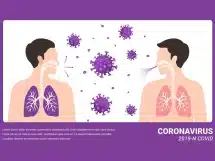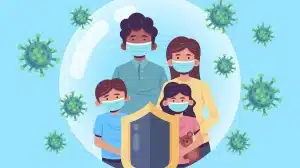As experts across the globe deliberate over the best and worst-case scenarios for recovery from the COVID-19 outbreak, Jisha Krishnan looks at what history has taught us.
By Jisha Krishnan
In the 14th century, Europe experienced the most fatal of all pandemics, killing nearly 200 million people – 60 percent of the population. The Black Death, or the bubonic plague, was caused by Yersinia pestis, a zoonotic bacteria usually found in small mammals and their fleas. Although there was little scientific understanding of the cause back then, Venetians were the first to initiate the practice of forced isolation or quarantine to help prevent the spread of the disease.
The practice is followed even today in our battle against COVID-19. Every pandemic – irrespective of its severity and impact – has valuable lessons to impart, strengthening our defence against future outbreaks. Here’s looking at the recovery journeys of two influenza pandemics to guide us in our current predicament:
Spanish Flu
In the 20th century, the world witnessed three influenza pandemics – H2N2 in 1957, H3N2 in 1968, and the Spanish Flu in 1918. Dubbed as ‘the deadliest flu pandemic in recorded history’, the Spanish Flu killed at least 50 million people worldwide – more than 30 percent of the global population.
The seemingly innocuous symptoms of the illness, such as dry cough, fatigue, loss of appetite and the like, were initially ignored until a large number of patients were diagnosed with pneumonia and issues with respiratory organs. Also, the high death rate, especially among healthy adults in the age group of 15 to 34 years, was particularly alarming.
As the infection spread rapidly across Asia, Africa, Europe, and South America, people were increasingly advised to take precautionary measures – such as, not to shake hands with others, to stay indoors, to wear masks. Schools and theatres were shut down, public gatherings were banned, and isolation or quarantine orders announced.
Given that countries were engaged in World War I during that time, prevention was not easy. Besides, there were no diagnostic tests, antibiotics, or antiviral drugs back then. Not to mention, the serious shortage of doctors and medical staff.
Once World War I was over, cases of the flu started declining slowly. By the summer of 1919, the pandemic had ended. The key lesson was the life-saving powers of social distancing.
Swine Flu
The first influenza pandemic of the 21st century, Swine Flu was caused by a new form of the H1N1 influenza strain, similar to the one found in pigs. It originated in Mexico in April 2009 and spread across continents in less than nine weeks, courtesy ease and frequency of international travel.
The pandemic affected nearly 24 percent of the global population, taking over 2,84,000 lives. Although the severity was lesser than the Spanish Flu, there were challenges galore. For instance, experts were perplexed by the fact that about 80 percent of the deaths were in people younger than 65 years of age. Also, 47 percent of children between five and nineteen years developed symptoms, such as fever, chills, cough and body aches, as compared to 11 per cent of those aged 65 years or older.
The relatively quick recovery was aided by antivirals, which ensured that most people recovered without complications. Moreover, the H1N1 vaccine research started just nine days after the initial detection as the genetic sequences of the virus were uploaded to a public database to help augment the process of vaccine development. By December 2009, the vaccine was available for use. Currently, the annual flu vaccines include the influenza strain that causes swine flu.
Thanks to better pandemic preparedness and response planning, the H1N1 ended in August 2010. One of the key lessons was to share the virus’ genetic sequence as early as possible to facilitate a timely vaccine. Chinese scientists paid heed to this when they published the genetic blueprint of the novel coronavirus on January 12, 2020.
Road to recovery
The dynamics of pandemic diseases are ever-evolving. By mapping the spread of infectious diseases as well as augmenting our critical and clinical care capacity, we can mitigate their impact. While researchers across the world are consumed by the arduous process of understanding COVID-19, and finding a vaccine and cure, it is pertinent for us to remember the teachings from past pandemics.

















